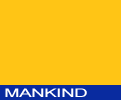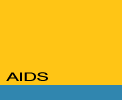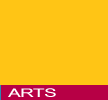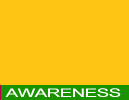




:: THE DOCUMENTATION
Chapter 5
After The Conference
A talk betweeen Theodor Schäfer, MAAA Senior Advisor, and Roland E. Futterer, MAAA Director, which took place at Berlin after the International Youth Leader Conference (IYLC) held at Marangu, Tanzania, February 2006. The talk reflects thoughts about the general meaning of a conference and about the bigger lessons learned at the IYLC.
The meaning of a conference

TS Before the conference you were talking about the image of the shadowy tree in the village, field or the savannas where people have been meeting traditionally, at all times, in most societies, in order to find protection from the sun or rain, to rest from work or travel and to communicate issues of interest and importance. You said, this simple image served you as a source of inspiration, a basic point of reference for the International Youth Leader Conference (IYLC) at Marangu. Could you deepen this thought?
REF AIDS is destroying the lives of millions of uninformed people across the continents with communities in Sub-Saharan Africa being hit the worst. It is one of our biggest challenges today, to find ways to communicate the message of prevention in the most effective way - to everybody within the shortest time, in his/her language, and in a culturally and locally sensitive and specific way. But how can this ever be achieved? The range and the complexity of the problem is overwhelming. What is needed? Is it totally unrealistic altogether? Even if this seems the case, should we give up? No -
TS So, where do you begin?
REF Just start! And start in a simple way. Beginning means speaking , it means dialogue! From me to you! About what? About our difficulties to communicate, about a culture of silence and its roots! Where? Whereever we meet! Why? Because, people are dying NOW.
TS Obviously, in many societies there is this culture of silence around HIV/AIDS. AIDS is killing physically, but before it kills you physically, it might kill you socially, emotionally, mentally, economically. People are afraid of the stigma it brings - of social exclusion, of being destroyed. To lose your work, your home and family, your dignity as a human being, to face death. That is why, for many people, silence is the only way to carry on, to avoid the worst scenario.
REF ...silence as complete denial. You make yourself and others believe all sorts of things: that the disease is the result of witchcraft or that AIDS is the punishment of a furious god, a paying off for your wrong doing. AIDS just becomes another myth. Reason is suppressed, does not exist. Mythical thinking and believing, an attempt of self-protection, a vicious circle, which can constitute a strong barrier.
TS What else do we need to speak of or learn about?
REF About sexuality, sex, modes of transmission and about communication in its broader sense. AIDS is a highly communicable disease and, in fact, can be seen as a disease of communication. You could say, by sexual activity between two individuals, "information" is shared and exchanged on a physical level (body fluids, bacteria, viruses), emotional level (feelings) and, often, mental level. (thoughts, states of mind) In which way and to what extend this activity and its implications is wanted, accepted, understood and communicated by the partners, depends on a complex web of biological, situational, personal and socio-cultural factors. Let me call this complex THE ROOM, the larger frame within which this sexual activity takes place.
Thus, the only way to meet the challenge is to start a dialogue, from individual to individual to individual, about THE ROOM which includes all mentioned dimensions from traditional beliefs and cultural myths to gender, social power relations and so on. But, first of all, people have to meet with other people in a conducive environment - maybe in the family, or in the field, in schools, on market squares, in meeting halls, churches, peer groups, and to start to practice communication. There are many places in society to meet, to share and to exchange information of all sorts. Therein lies the key, COMMUNICATION is the KEY. I know this sounds simplistic. To meet is the most natural thing. And inexpensive. People bring together all which is known by them about AIDS and compare the different knowledge and information which is basically the original meaning of the Latin word conferre. So, this is
what is needed: dialogue in natural, inexpensive conferences!
TS And the tree is the symbol for the meeting, for the conference, for this growing awareness.
REF Yes, here, ideally, the participants can exchange and collect seeds of knowledge and fruits of awareness and carry them back into their communities. Slowly, slowly, new trees can evolve and awareness multiply. Somehow, this is the only way if we want to reach the millions. We all learn and act while we are growing up into an ever changing world which starts with our home and family. Some worlds, some individuals change faster than others - to the better or to the worse which all depends on circumstances. Ingredients together with - most importantly - the cook , make the soup.
TS Time, place, conditions, the whole framework - all depends entirely on people´s socio-economic situation, the cultural and religious background and their personal motivation, talents and so on, all of which are changing and developing in a continuous inter-play. People meet and learn from each other. Right, but it requires time and skills to become a social activist, a teacher, a counsellor or a leader. To touch other people´s heart and mind so they might experience change and be able to overcome feeling of fears, shame, taboos and the like! However simplistic or romantic the whole view, I can see the potential of dialogue - the idea of a natural, relatively resource-independent potential to be applied in new creative ways.
So, how was the conference, the bringing together and comparing at Marangu?
REF The first step of the conference, its announcement, was easy. Through email correspondence, but also by word of mouth, many youth leaders, teachers, counsellors, religious leaders and other activists were informed about this kind of "alternative" and in-expensive international conference which should not waste local or international resources, but rather focus on the essential need for people from different corners of society and different countries to come together, to share knowledge and teach each other, and finally, to communicate their experiences back into their communities. The second step which was to help people to get to Marangu was more difficult. Unfortunately, we started rather late to raise small funds to help people from East Africa to pay the bus trip, accommodation and boarding at the Teachers´ College. Sponsors were not easy to find. This was the first lesson learned, but it was also seen as a part of the challenge. AIDS is NOW. We told people that we had this very limited budget, and most of them understood that they had to raise money themselves, at least for their trip, or wait for another chance. Some of the participants paid for their accommodation with the help of sponsors of their own. This kind of self-effort and contribution from participants was intended and somehow expected, since our approach was participatory in every sense, and in order to avoid the "conference tourism" you can often find at other international events.
Aids is Money - Reality and Modern Myth. The big lesson learned
TS I can imagine that it was not easy for everybody to understand this kind of approach. Representatives from the capitalistic North organizing an international conference in Sub-Saharan Africa with almost NO money! Can this be true? In times of post-colonial, dollar-and-Euro-driven Western AID or AIDS industry and business?
REF No, it was not easy for some person. There were financial expectations from both some individuals from the Marangu community and from participants. High expectations, I think. Already when we, Norbert and I, arrived at Marangu, there were rumours. According to a local organizer, some citizens had heard about this NGO from Germany, which was about to spent millions for an international event. Others felt disappointed since they had not been informed about the budget and were not invited to share in.
TS What about the participants from outside Marangu?
REF There were especially some journalists from Dar who apparently could not accept the fact that this was a grass roots event. I doubt that they understood the message or the approach at all. On the last day of the conference I was accused by one of them of not wanting to pay his bus trip as he maintained, I had promised. Blinded by greed and ignorance, or by whatever motivation, another journalist managed to make use of this situation and try to blackmail us. He threatened openly to inform the government and write about the truth - his imagined truth about this conference. Interestingly, the topic of this last morning was “HIV/AIDS and Poverty”. This person ignored the schedule boldly and talked to the participants about the usual international standards of 4 or 5 star hotels, 50 Euros daily sitting allowances for each participant, international food (we got real local Chagga food) and alike. Actually, he managed to kindle a conference FIRE, as I called it. Many people, especially farmers and activists from the south of Tanzania joined in his wave of anger and hatred and I decided to stop the conference there.
TS Sad story.
REF Yes, sad. But on the other hand also a great lesson in reality. Definitely, it was the biggest lesson learned. I am sure, people will remember the first 4 intensive days of constructive work of the conference with different important sessions on HIV/AIDS issues, common morning walks and meditations, the reforestation programme and the relaxed conference disco the evening of the fourth day, but also this impressive last day which ironically reflected the topic "HIV/AIDS and poverty" in a special, dramatic and challenging way. A mirror of reality and its underlying socio-cultural forces. I think the incidence also opened my eyes for the political dimension of HIV/AIDS or, let me say, the moral side of the coin. AIDS and AID, together AID$ - both metaphors for business, for money! Being a myth and a reality at the same time!
TS Would you like to repeat such a conference in the future?
REF Yes, but I think each conference will be different, with its own dynamics. The idea from the beginning was to repeat such a coming together once a year. I was already asked if I was interested in organizing another conference in Burundi. The challenge I see now after the IYLC is to find more enthusiastic people to join in the preparation for such an international grass roots event. We were hardly a handful of people this time. Moreover, it is important to get the message absolutely clear right from the start. I think also that there should be local organizers preparing and informing the community well in advance, leaving foreign NGO or partners in the background, in order to avoid too high expectations - the problem we just discussed above. Actually, the IYLC can also been seen as a workshop on a larger scale, for peer groups or others, who wish to meet and to communicate; to realize the simple idea of meeting repeatedly under the symbolic tree, here and now; to stand together, break the silence, encourage each other and overcome fear.
TS Finally, could you tell us something about the concept of the HIGHWAY used in the title of the conference?
REF
People sometimes talk about the clash of cultures in the present accelerating process of globalisation. You could also call it a cross-over of cultures and sub-cultures. Well, the HIGHWAY, of course, is a Western concept, however, it also has become global reality developing at a very high speed in many regions. Human beings migrate more and more with increasing numbers of vehicles and roads around the world. In most cultures, nowadays, the highway is associated with the idea of mobility, high speed, liberty, independence, progress and so on. It is a symbol of modernity and a way out of the past. Although there are more negative consequences of growing numbers of highways and vehicles with uprooted migrants everywhere, however, in the minds of young people who live in remote rural areas close or far off a beaten track, it is still something of a dream, a way out of all problems. So I thought, why not using it in the context of HIV/AIDS awareness and thus turn it definitely into something good!
TS You turned it into a golden triangle on stage of the conference hall?
REF As the HIGHWAY led all participants to the foothills of the majestic Mt.Kilimanjaro - with the spiritual dimension of HIV/AIDS as one of the many topics in mind - all images and ideas melted together in this huge golden triangle standing symbolically for the speedy highway, the mounting awareness, the enlightened heart and mind, the spontaneous and direct understanding of all. With an eye - the continent of Africa - in its centre, it even appeared as the symbol of the Holy Spirit. The material it was made of actually came from three golden life-saving coverlets. At its basis, as "vehicles", we put the ficus saplings which we later on during the reforestation afternoon planted at Kinukamori Waterfalls. On its left hand side we placed a white memorial cross with a drum in silence underneath, and, on the right hand side a huge red ribbon, in former times having served as a traditional Indian turban.

Back to the top
![]()
home | the vision | about us | contact | disclaimers